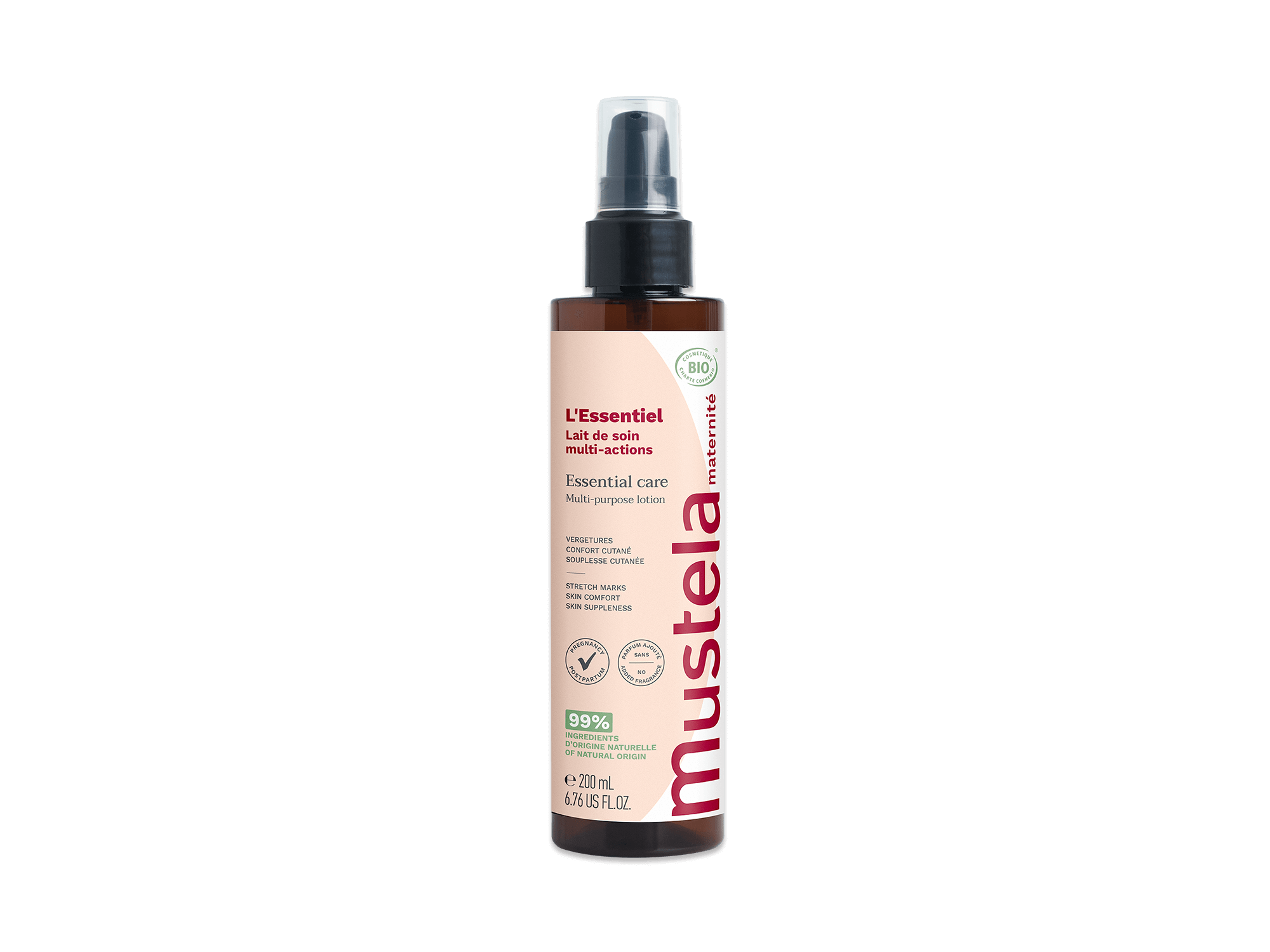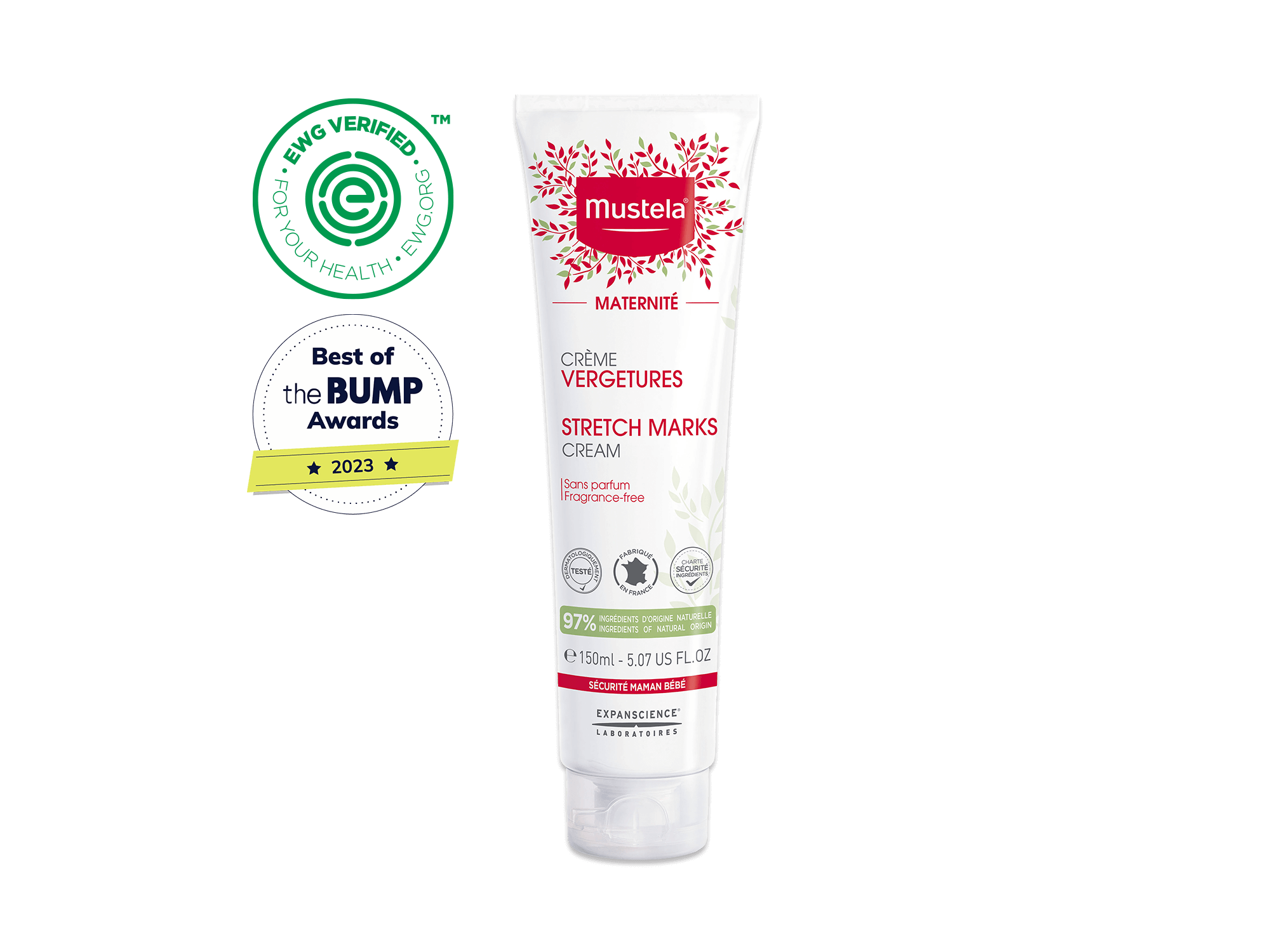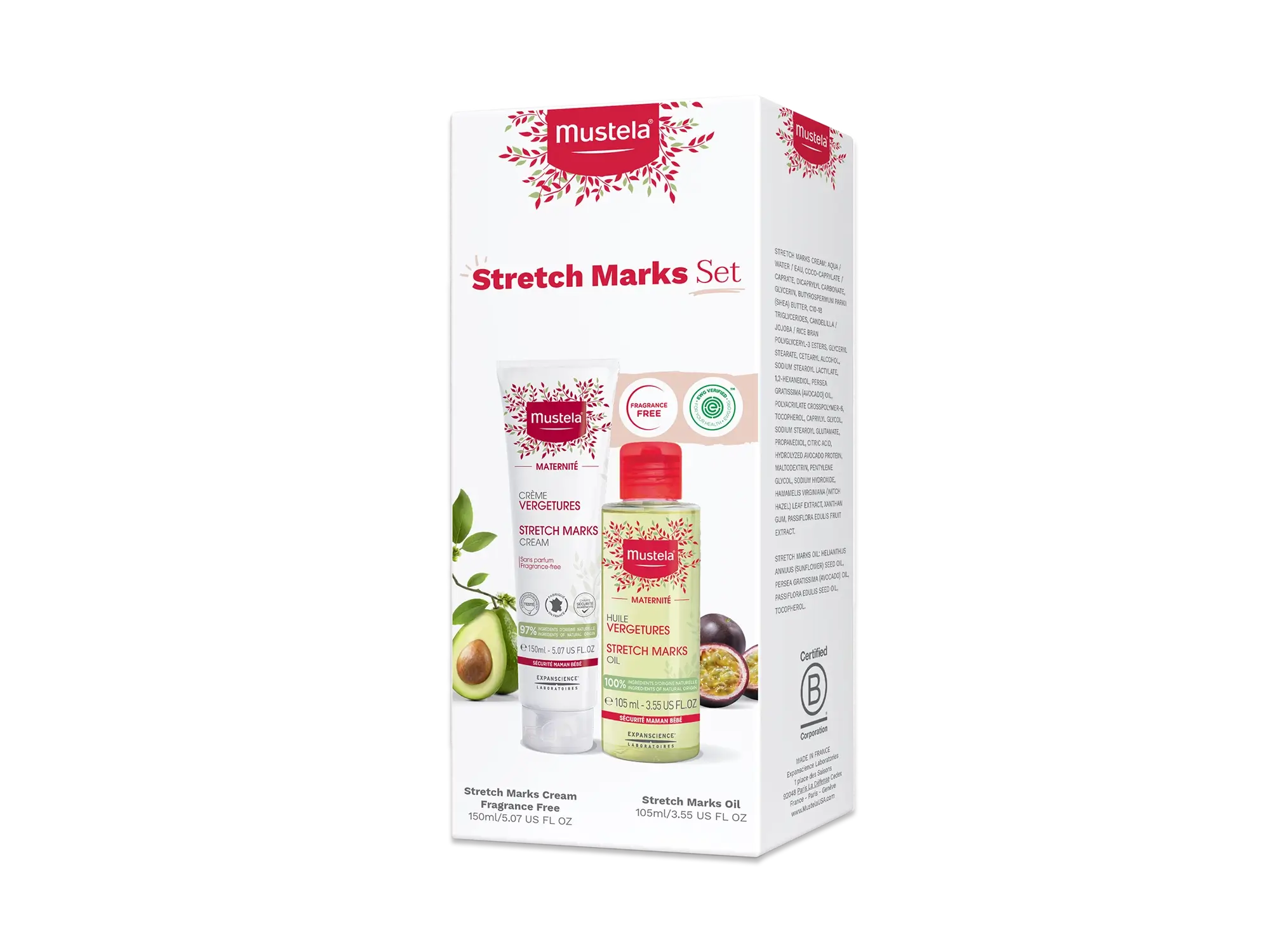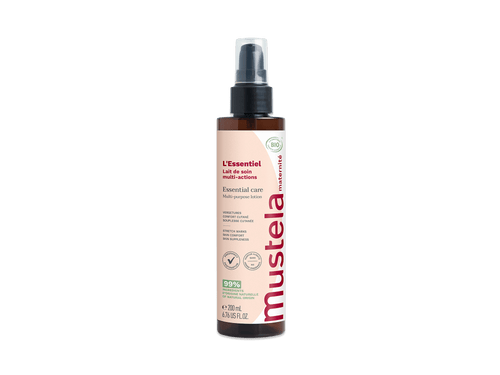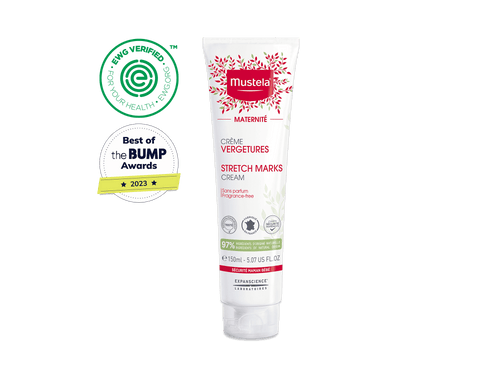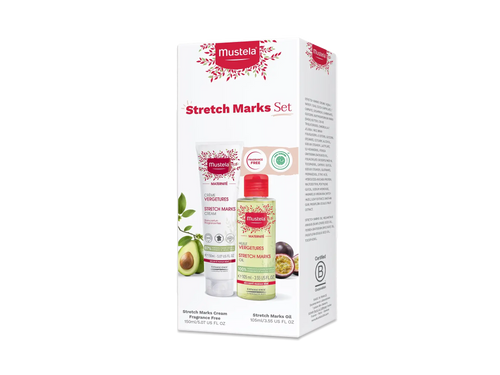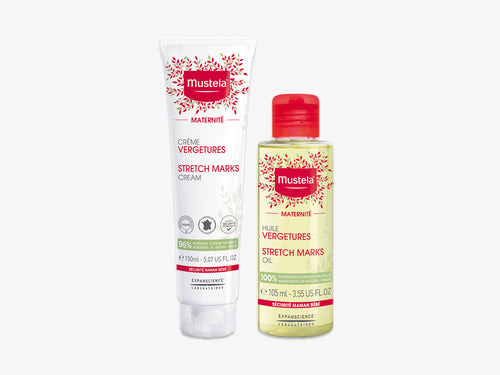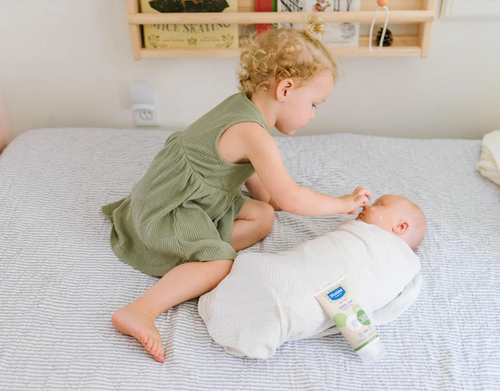In recent years, scientists have produced a mountain of research demonstrating the importance of skin-to-skin contact. Now, medical experts recommend at least one hour of skin-to-skin contact immediately after birth for all newborns.
This post will explain everything you need to know about skin-to-skin contact with your baby. First, we’ll explain exactly what skin-to-skin contact it is. Then we’ll cover the importance of skin-to-skin contact and present some of the remarkable benefits.
Lastly, we’ll close with four tips to continue skin-to-skin contact long after you and your little one have left the hospital.

What Exactly Is Skin-To-Skin Contact?
Skin-to-skin contact, also called kangaroo care (or SSC for short), is the period of time immediately after birth when you hold your baby directly on your bare chest.
During this time, your baby’s skin should be exposed as well. They can wear a hat to contain their body heat and a diaper if you so choose, but it’s recommended that your little one is otherwise naked.
If you’re comfortable being topless, then your baby can simply lie on your chest between your breasts. But if you prefer to have some clothing on, it’s best to wear a button-up shirt. That way, you can undo the buttons and allow your infant to lie on your bare chest without needing to remove the shirt.
Medical experts recommend at least one hour of skin-to-skin contact immediately after your child is born. This will ensure that both you and your newborn receive all of the benefits of skin-to-skin contact.

The Importance Of Skin-To-Skin Contact At Birth
Researchers have published study after study showing a multitude of health benefits of skin-to-skin contact.
Providing Comfort To Your Baby
Research has suggested that separating a baby from its mother immediately after birth causes psychological stress for both parties. The baby will start crying in what may be a “separation distress call.”
Skin-to-skin contact soothes your baby while allowing you to foster a bond that will literally last a lifetime.
Helping Your Baby’s Body Acclimate
For a newborn that has just left the womb for the very first time, the world can feel like a harsh environment. The air is extremely dry, possibly leading to newborn peeling skin, or very chilly, potentially causing a baby cold. On top of that, your baby will be breathing oxygen for the first time.
As such, it’s critical to make sure that your baby’s body temperature, breathing, and heart rate are all stable in the time immediately after delivery. There is a great deal of evidence that shows skin-to-skin contact can help with all three of these factors.
As one scientist puts it, “Parents’ bodies may be conceptualized as the most optimal environment for the fragile infant.”
Regulating Your Baby’s Blood Sugars
In addition to stabilizing your baby’s breathing, body temperature, and pulse, skin-to-skin contact will help regulate your baby’s blood sugars. Researchers note that “blood glucose 75 to 90 minutes following the birth was significantly higher in SSC infants.”
Another study arrived at the same conclusion, finding that “mean level of blood glucose was the highest in skin-to-skin contact group.”

Transferring Helpful Bacteria To Your Baby
As your newborn exits your cervix through the birth canal, they are exposed to many of the helpful bacteria that live inside your body. This allows those helpful bacteria to colonize in your baby’s body, too.
Moreover, there is some evidence that skin-to-skin contact can also help your newborn rid their body of harmful bacteria. A team of researchers wrote that “skin-to-skin contact remained strongly associated with decolonization of newborns' nostrils from” harmful MRSA/MRSE bacteria.
Relieving Your Baby’s Pain
Several studies have shown that skin-to-skin contact will soothe your infant and produce “an analgesic effect,” especially in preterm newborns. An additional study had the same results, finding that skin-to-skin contact has “a significant effect on reducing autonomic pain responses in preterm infants.”
But pain relief isn’t limited to preterm newborns. Yet another paper found that a “combination of oral 25% dextrose treatment and skin-to-skin contact acted synergistically to decrease acute pain” in healthy newborns.
When you think about it, this is truly incredible — skin-to-skin contact can literally prevent your baby from feeling physical pain!

Long-Term Benefits Of Skin-To-Skin Contact
All of the important health benefits listed above are impressive, but that’s not even an exhaustive list! Those are only the benefits that skin-to-skin contact provides immediately after your baby is born. There are also several long-term benefits of skin-to-skin contact.
First of all, skin-to-skin contact is known to promote healthy breastfeeding. Babies who have at least an hour of skin-to-skin contact after birth are observed to find the nipple more easily, latch on better, “breastfeed for longer durations,” and ultimately receive more nourishment.
Second, parents who participate in skin-to-skin contact in the time directly after delivery develop a closer relationship with their babies. Moreover, infants who receive skin-to-skin contact cry for shorter periods of time when compared to infants who did not.
One study conducted in Israel suggested the psychological effects of skin-to-skin contact can last until children are 10 years old.
Finally, the benefits of skin-to-skin contact aren’t only for your little one. There are health benefits for you, too! Research has provided evidence that skin-to-skin contact reduces the likelihood of postpartum depression.

Four Tips To Continue Skin-To-Skin Contact
The importance of skin-to-skin contact couldn’t be clearer. But you shouldn’t think of skin-to-skin contact as something that you only need to do right after your baby is delivered. Make skin-to-skin contact a regular part of parenting.
Here are some tips to do exactly that.
Make Bath Time Special
Giving your little one a bath doesn’t have to be a chore. In can be a time for you to bond with your baby. Make sure to follow these instructions on how to bathe a newborn and always remember important baby safety tips.
Your baby has delicate skin that’s easily irritated, so it’s essential to use gentle and natural, baby-friendly skin care products like Mustela’s. From Foam Shampoo For Newborns and Gentle Cleansing Gel to Bath Oil and Multi-Sensory Bubble Bath, Mustela has all of your bathtime needs covered.

Give Your Baby A Massage
A gentle massage will soothe your newborn while also strengthening the bond between you and your little bundle of joy. After changing your baby’s diaper and after giving your baby a bath are both ideal times for a short massage.
Add a little Baby Oil to soften your little one’s skin while also soothing their spirits.
Achieve Skin-To-Skin Contact During Feeds
Medical experts recommend breastfeeding exclusively until your baby is at least six months old, although many parents choose to wait longer to wean their baby. Breastfeeding is not only the ideal way to provide nutrients to your little one, but it’s also an easy way to get some skin-to-skin contact.
It’s important to never force your little one to latch on to your breast. Instead, simply open your shirt and let your baby rest their head on your chest. Just think of it as dedicated time for skin-to-skin contact.
When your little one is hungry, they will begin to search for their food source, and you can then help them latch on and begin nursing.
Expert tip: Apply Mustela's Nursing Comfort Balm in-between feedings to relieve pain and keep your skin healthy. This soothing nipple cream will ease discomfort and moisturize sensitized nipples. Plus, it’s environmentally friendly, made of 100% ingredients of natural origin per ISO 16128 standard, and safe for both you and your baby during prenatal and postpartum pregnancy.

Let Your Baby Rest On Your Chest
While it’s essential to give your baby plenty of tummy time to help them begin crawling, it’s also necessary to make time for cuddling with your little one. Letting your baby lie on your chest before and after feeding time is a simple way to get plenty of skin-to-skin contact.
You can even let your baby fall asleep and take a short nap on your belly or chest. Just make sure that you don’t fall asleep yourself. It’s not safe for you and your child to both fall asleep in this position. The only safe baby sleep position for your newborn is on their back.
There are also a variety of ways to carry your baby, such as with a sling or kangaroo carrier, that will allow you to get skin-to-skin contact with your baby while keeping your hands free.
With the importance of skin-to-skin contact made so abundantly clear through scientific research, medical experts around the world unanimously agree that at least one hour of skin-to-skin contact after birth is essential.
But skin-to-skin contact shouldn’t stop then! Follow the four tips above to keep building a wonderful relationship with your little bundle of joy.




